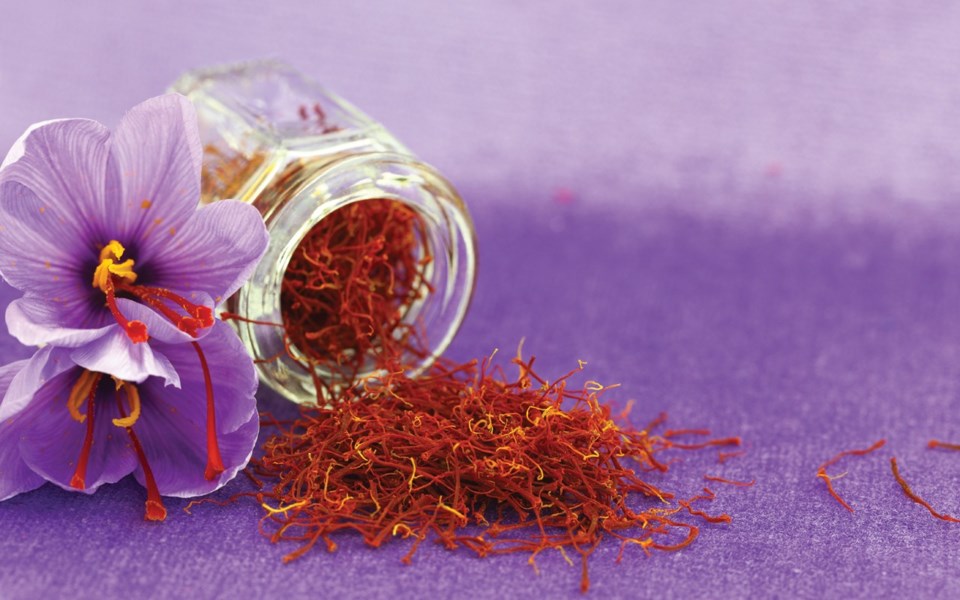Hippity-hop! Here comes spring and all things Easter, including chocolatey rabbits leaping quickly down your throat and a pantheon of purple and yellow—the traditional colours of Easter.
This is one of the few times North Americans collectively trot out these noble, powerful colours in concert—timeless colours layered with meaning.
At the Vatican, purple is worn at Advent and Lent because it represents sorrow. But we also know purple symbolized power and status in ancient times, as it was so difficult and expensive to obtain.
Purple dye was first known to have been produced around 2000 BC in the Phoenician city of Tyre, now located in Lebanon. The city gave this special dye its name—Tyrian purple. It came from murex shellfish (Bolinas brandaris), exquisite little conical sea snails that live in the Mediterranean Sea and elsewhere. Indigenous people in Central America have also long-used murex shellfish for purple dye. The snail's mucousy secretions contain the desired chemical, which really produces a reddish-purple effect. Like so many good things in life, a dog first stumbled onto the discovery after its mouth turned red-purple from a murex snack.
In Europe, using fabrics dyed Tyrian purple was, at one point, restricted to royalty. The joy of it was this particular purple didn't fade with time. Rather, it deepens into evermore brilliant hues, moving to a rich red as it ages.
It takes huge numbers of murex shellfish to produce very little dye. Historian Beatrice Caseau of the Université Paris-Sorbonne, has noted that "10,000 shellfish would produce 1 gram of dyestuff, and that would only dye the hem of a garment in a deep colour." Some 300 years after the birth of Christ, a pound of the red-purple dye cost Ancient Romans three pounds of gold.
As for bright Easter yellow, it may have come from the papal gold worn at Christmas and Easter to symbolize Christ, or it may have been plucked from all the yellow flowers this time of year—daffodils, forsythia, even skunk cabbage in this neck of the woods. Or it may simply have surfaced into Easter-time use as the complementary colour of purple.
Either way, here's a great way to put a nice twist to your holiday meal this year, with threads connecting to both noble colours.
Saffron has been with us, most recorded histories say, about as long as Tyrian purple — 4,000 years, give or take. It, too, has long been used as a dye, for cloth and for foods, producing a brilliant yellow in both. The word "saffron," from the Persian safra, and earlier Arabic za'faran, simply means yellow.
In the Illiad, Homer describes a saffron-robed goddess. Virgil and other Ancient Roman poets actually wrote poems in honour of saffron. But saffron has also been known for millennia as a rich, fragrant, powerful spice with floral/earthy/musky notes. There's nothing quite like it—in fact, that's one of the tips to ensure you aren't buying some kind of fake, two-bit substitute like marigold petals. Nothing has an aroma like saffron.
Whether its end-use is spice or dye, saffron comes from the stigmas of Crocus sativus. This gorgeous little plant, also known as autumn crocus and about a dozen other names, is native to the Middle and Near East. It's a cousin to the smaller, cultivated crocus we love to grow around here this time of year, but Crocus sativus is also now a much-valued cultivar, grown from Southern France to North Africa, far beyond its homelands.
Some of the most valued saffron in the world now comes from around Valencia, Spain. And valued it is—much like that purple dye from our friendly murex snails.
Saffron must be harvested by hand. It is the three l-o-n-g, bright, orange-red stigmas of the saffron crocus that are used. These are dried whole for use, which is preferred, especially for classics like paella, bouillabaisse, and Milanese risotto. Or it's ground into powder, a riskier buy because it can easily be adulterated.
Writing in Food in History, Maguelonne Tousant-Smat tells us that it takes about 100,000 flowers to get a kilo of dried saffron stigmas. Ergo the timeless expression saffron is worth its weight in gold—about a third of the price for the purple Tyrian dye.
In our household, we've been enjoying a gorgeous saffron tea from Iran. It's produced by Sahar Khiz, based in Mahabad—a small city in northwestern Iran with an elevation exactly double that of Whistler. The deep red-orange box, the colour of saffron stigmas, features peacocks and a Persian woman in traditional dress, pouring tea from an elegant pot. A couple of purple saffron crocuses with their flame-red stigmas frame the scene.
The deep, rich saffron fragrance is worth the price alone (some $6 for 25 teabags). But this is not just another pretty tea—it's purported to relieve depression, prevent cancer, lower blood pressure, and more. Some throughout history have even thought that saffron could reverse aging—a kind of mini-resurrection.
Saffron tea or fragrant saffron rice, which should turn out a beautiful yellow (there are tons of recipes for this simple, delightful dish online) are easy ways to dig into ancient times and cultures, and add a delightful note to your Easter feaster. Include a bright little pot of purple crocuses on your table and you'll be set.
Happy Easter!
Glenda Bartosh is an award-winning journalist who finds the best and best-priced saffron in Middle Eastern and Persian stores. She writes in this space every other week.




